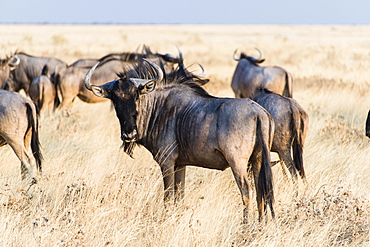Recent searches
Loading...
1174-11481 - A full body portrait of a wild dog, Lycaon pictus, standing next to water.
832-400136 - African Elephant (Loxodonta africana) bullfight, in the African desert. 2 male animals are fighting with each other. Full body side view with dust clouds. Etosha National Park, Namibia, Africa
832-399563 - Lioness (Panthera leo), close up portrait of her face, head and body. The wild animal looks intense. Okavango Delta, Botswana, Africa
832-399355 - Canada goose (Branta canadensis) backlit, surrounded by splashes of water, bathing in a body of water
832-398501 - Portrait young woman with headphones jumping9
832-398495 - high angle tasty kebab slate with other dish tomatoes
832-398493 - top view yummy popsicles plate with red grapefruit
832-398486 - front view veggie burger with black buns cutting board
832-398475 - high angle credit card with hook phishing
832-398469 - side view woman playing with her feet lake
832-398466 - young african american musician celebrating international jazz day3
832-398457 - long hair artist holding hands air stage
832-398449 - flat lay vintage telephone receiver with cord paper shape
832-398437 - broccoli creme soup winter food with parsley. High resolution photo
832-398434 - high view fake news message torn red paper. High resolution photo
832-398430 - front view little girl measuring sprouts growing home. High resolution photo
1350-6608 - Mexican aztec dress gods at Grand Palladium White Sand Resort and Spa in Riviera Maya, Yucatan Peninsula, Quintana Roo, Caribbean Coast, Mexico.
Aztec clothing was generally loose fitting and did not completely cover the body. When the Spanish arrived in Mexico, the people were surprised to see them in their full armour, with only their faces exposed.
Aztec clothes were generally made of cotton (which was imported) or ayate fiber, made from the Maguey Cactus (also called the Century Plant or American Aloe). Women would weave the fibers into clothing, a task girls were taught as young teenagers. Because of their vast trading network, the Aztecs were able to make use of a beautiful array of dyes, creating the brilliant
1350-6595 - Mexican aztec dress gods at Grand Palladium White Sand Resort and Spa in Riviera Maya, Yucatan Peninsula, Quintana Roo, Caribbean Coast, Mexico.
Aztec clothing was generally loose fitting and did not completely cover the body. When the Spanish arrived in Mexico, the people were surprised to see them in their full armour, with only their faces exposed.
Aztec clothes were generally made of cotton (which was imported) or ayate fiber, made from the Maguey Cactus (also called the Century Plant or American Aloe). Women would weave the fibers into clothing, a task girls were taught as young teenagers. Because of their vast trading network, the Aztecs were able to make use of a beautiful array of dyes, creating the brilliant
832-398000 - White rhino (Ceratotherium simum) looking into camera full body front view. Etosha National Park, Namibia, Africa
860-291340 - Butterfly with drops of rain on the head and body, Villarotta, Reggio Emilia, Italy
1350-4875 - Fountain of Neptune, Piazza Della Signoria, Florence, Tuscany, Italy
832-394190 - Fluke of a humpback whale and body of a humpback whale, whale, Eyjafjoerour, Akureyri, Northern Iceland, Scandinavia, Iceland, Europe
1116-50704 - Mosquito sculptures at Delta Junction Visitor's Center on a sunny day, Interior Alaska in autumn; Delta Junction, Alaska, United States of America
1116-51948 - Extreme close-up of the striped fur and mane of a plains zebra (Equus quagga - formerly Equus burchellii) in the Etosha National Park; Otavi, Oshikoto, Namibia
1113-106895 - Young Egyptian goose family with three chicks on the Rhine, Bad Honnef, NRW, Germany
1113-107060 - Nutria on the banks of the Rhine, Bad Honnef, North Rhine-Westphalia, Germany
1113-106809 - Nutria while eating on the banks of the Rhine, Bad Honnef, North Rhine-Westphalia, Germany
1113-107212 - Collared Aracari (Pteroglossus torquatus), Costa Rica, Central America
860-290217 - Kruger National Park ranger using an axe to extract a tusk from the body of a naturally dead elephant (Loxodonta africana) to combat poaching, Kruger NP, South Africa
860-290220 - Kruger National Park rangers cleaning in the river a tusk just extracted from the body of a naturally dead elephant (Loxodonta africana) in order to fight against poaching, Kruger NP, South Africa
860-290219 - Kruger National Park rangers carrying a tusk that has just been extracted to the root of the body of a naturally dead elephant (Loxodonta africana) in order to fight against poaching, Kruger NP, South Africa
860-290218 - Rangers of the Kruger National Park just extracted a tusk to the root for two hours from the body of a naturally dead elephant (Loxodonta africana) in order to fight against poaching, Kruger NP, South Africa
1178-35511 - Curious Caucasian woman admiring cat on sofa
1345-44 - Antarctic fur seal (Arctocephalus gazella), Stromness Bay in South Georgia
832-391154 - Young white-tailed eagles (Haliaeetus albicilla) standing at the edge of a water body in winter, Kutno, Poland, Europe
1113-104313 - Young woman walking at the beach with a dog, Fuerteventura, Spain
1113-104405 - Woman and boy enjoying fish spa, Downtown Core, Singapore
1113-104314 - Young woman walking at the beach with a dog, Fuerteventura, Spain
1113-104836 - Two boys looking at a chameleon, Khaudum, Namibia
1113-104475 - Woman holding a young turtle on hand, Praia, Santiago, Cape Verde
1113-104474 - Young turtle on a hand, Praia, Santiago, Cape Verde
1113-104071 - Bedouin with shisha at the desert in the evening, Dubai, V.A.E., United Arab Emirates, Middle East, Asia
832-388974 - Nutria ( Myocastor coypus) in a body of water, portrait, Lower Saxony, Germany, Europe
832-388096 - King penguin (Aptenodytes patagonicus) cools his body through elevated feet, partial view, Volunteer Point, Falkland Islands, Great Britain, South America
832-386457 - Two Japanese macaque (Macaca fuscata) in body care, delousing, Yamanouchi, Nagano Prefecture, Honshu Island, Japan, Asia
832-383856 - Hot stones are filled into the body with tongs, traditional cooking of a goat with hot stones in its belly, Mongolian cooking method Boodog, Toew-Aimag, Mongolia, Asia
1116-47994 - A cheetah (Acinonyx jubatus) races along with its legs tucked under its body. It has golden fur covered with black spots, and it's legs and the background are blurred by the slow shutter speed, Masai Mara, Kenya
1116-47993 - A topi (Damaliscus lunatus jimela) stands in profile on the horizon at sunset. It's body is silhouetted against the bright pink clouds in the sky, Maasai Mara National Reserve, Kenya
1116-46661 - Captive Brown Bear (Ursus Arctos) Playing In The Snow At The Alaska Wildlife Conservation Center In Winter, Portage, Alaska, United States Of America
1174-5102 - The upper body of a lioness, Panthera leo, lying in green grass, looking away, Londolozi Game Reserve, Sabi Sands, Greater Kruger National Park, South Africa
1174-5093 - An African fish eagle, Haliaeetus Vocifer, flies over water, legs tucked against body, flying out of frame, Londolozi Game Reserve, Sabi Sands, Greater Kruger National Park, South Africa
1174-5191 - An elephant, Loxodonta africana, stands knee deep in water, wet body, trunk sprays water, looking away, Londolozi Game Reserve, Sabi Sands, Greater Kruger National Park, South Africa
1174-5134 - A leopard's upper body, Panthera pardus, lying on tree branch, alert, green yellow eyes, Londolozi Game Reserve, Sabi Sands, Greater Kruger National Park, South Africa
1174-5039 - The head and body of a common tiger snake, Telescopus semiannulatus, mouth open, yellow orange eyes, coiled on a branch, Londolozi Game Reserve, Sabi Sands, Greater Kruger National Park, South Africa
1116-41476 - Beaver Swimming In Water With A Branch In It's Mouth In Early Spring In Elk Island National Park, Alberta, Canada
832-381122 - Leopard (Panthera pardus), waterhole, Etosha National Park, Namibia, Africa
832-382158 - Elephant walking over the dry grasslands, African Elephant (Loxodonta africana), Etosha National Park, Namibia, Africa
832-382330 - Leopard (Panthera pardus) sitting under a dry tree on stony ground, Etosha National Park, Namibia, Africa
832-381393 - African Elephant (Loxodonta africana) drinking at a river, Kruger National Park, South Africa, Africa
832-381309 - Lion (Panthera leo), with a mane, Ngorongoro, Serengeti, Tanzania, Africa
832-381403 - Kingfishers (Alcedo atthis), copula, Swabian Alb biosphere reserve, Baden-Württemberg, Germany, Europe
832-381140 - Bengal Tiger (Panthera tigris tigris) walking in the forest, Ranthambhore National Park, Sawai Madhopur, India, Asia
832-381264 - Giraffe (Giraffa camelopardis) with young standing next to bushes, Etosha Pan, Etosha National Park, Namibia, Africa
832-381145 - Common Buzzard (Buteo buteo) resting in the snow, Swabian Alb biosphere reserve, Baden-Württemberg, Germany, Europe
832-381535 - Nile Crocodiles (Crocodylus niloticus), swimming, lying on the shore, aerial view, Luangwa River, South Luangwa National Park, Zambia, Africa
832-381124 - American Flamingo (Phoenicopterus ruber), Galápagos
832-381390 - Harbor seals (Phoca vitulina), Plettenberg Bay, Garden Route, District Eden, Western Cape, South Africa, Africa
832-381767 - Leopard (Panthera pardus) lying camouflaged on stony ground, Etosha National Park, Namibia, Africa
832-381391 - Leopards (Panthera pardus), adult male and female, fighting after mating, South Africa, Africa
832-382332 - African Penguin (Spheniscus demersus) on the sandy beach, Boulders Beach, Simon's Town, Western Cape, South Africa, Africa
832-381533 - Red Squirrel (Sciurus vulgaris), black morph, perched on a tree stump, Fischen, Allgäu, Bavaria, Germany, Europe
832-381797 - African Penguins (Spheniscus demersus), copulating, Boulders Beach, Simon's Town, Western Cape, South Africa, Africa
832-381670 - Galloway cattle (Bos primigenius taurus) in backlight on a pasture, Döberitzer Heide nature reserve, Brandenburg, Germany, Europe
832-381668 - Howling Wolves (Canis lupus) in the snow, Hesse, Germany, Europe
832-382213 - African Bush Elephant (Loxodonta africana), calf, Massai Mara, Rift Valley Province, Kenya, Africa
832-382233 - White Rhinoceros or Square-lipped Rhinoceros (Ceratotherium simum), Lake Nakuru National Park, near Nakuru, Rift Valley Province, Kenya, Africa
832-381738 - Greater Flamingo (Phoenicopterus roseus), pair mating, copula, Camargue, Southern France, France, Europe
832-382188 - African Bush Elephant (Loxodonta africana) taking a dust bath, Koinachas waterhole, Etosha National Park, Namibia, Africa
832-381355 - Two fighting Burchell's Zebras, (Equus quagga burchellii), Etosha National Park, Namibia, Africa
832-381092 - Bengal Tiger (Panthera tigris tigris) walking along path, Ranthambhore National Park, Sawai Madhopur, India, Asia
832-382331 - African Penguin (Spheniscus demersus) on the sandy beach, Boulders Beach, Simon's Town, Western Cape, South Africa, Africa
832-382186 - Herd of Blue Wildebeest on prairie grass (Connochaetes taurinus), Etosha National Park, Namibia, Africa
832-381669 - Harp Seal or Saddleback Seal (Pagophilus groenlandicus, Phoca groenlandica), pup on pack ice, Magdalen Islands, Gulf of Saint Lawrence, Quebec, Canada, North America
832-381293 - Two fighting Burchell's Zebras, (Equus quagga burchellii), Etosha National Park, Namibia, Africa
832-382328 - Young African Elephant (Loxodonta africana) drinking at the Nuamses waterhole, Etosha National Park, Namibia, Africa
832-382329 - Two elephants playfully fighting, African Elephant (Loxodonta africana), Etosha National Park, Tsumcor waterhole, Namibia, Africa
832-381335 - Two elephants playfully fighting, African Elephant (Loxodonta africana), Etosha National Park, Tsumcor waterhole, Namibia, Africa
832-382240 - African Bush Elephant (Loxodonta africana) taking a dust bath, Koinachas waterhole, Etosha National Park, Namibia, Africa
832-382281 - Herd of African Bush Elephants (Loxodonta africana), Amboseli National Park, Rift Valley Province, Kenya, Africa
832-382259 - Elephant in the evening light on dry grassland, African Elephant (Loxodonta africana), Etosha National Park, Namibia, Africa
832-382239 - African Bush Elephant (Loxodonta africana) taking a dust bath, Koinachas waterhole, Etosha National Park, Namibia, Africa
832-382206 - African Bush Elephant (Loxodonta africana) taking a dust bath, Koinachas waterhole, Etosha National Park, Namibia, Africa
832-382210 - African Bush Elephant (Loxodonta africana) taking a dust bath, Koinachas waterhole, Etosha National Park, Namibia, Africa



































































































